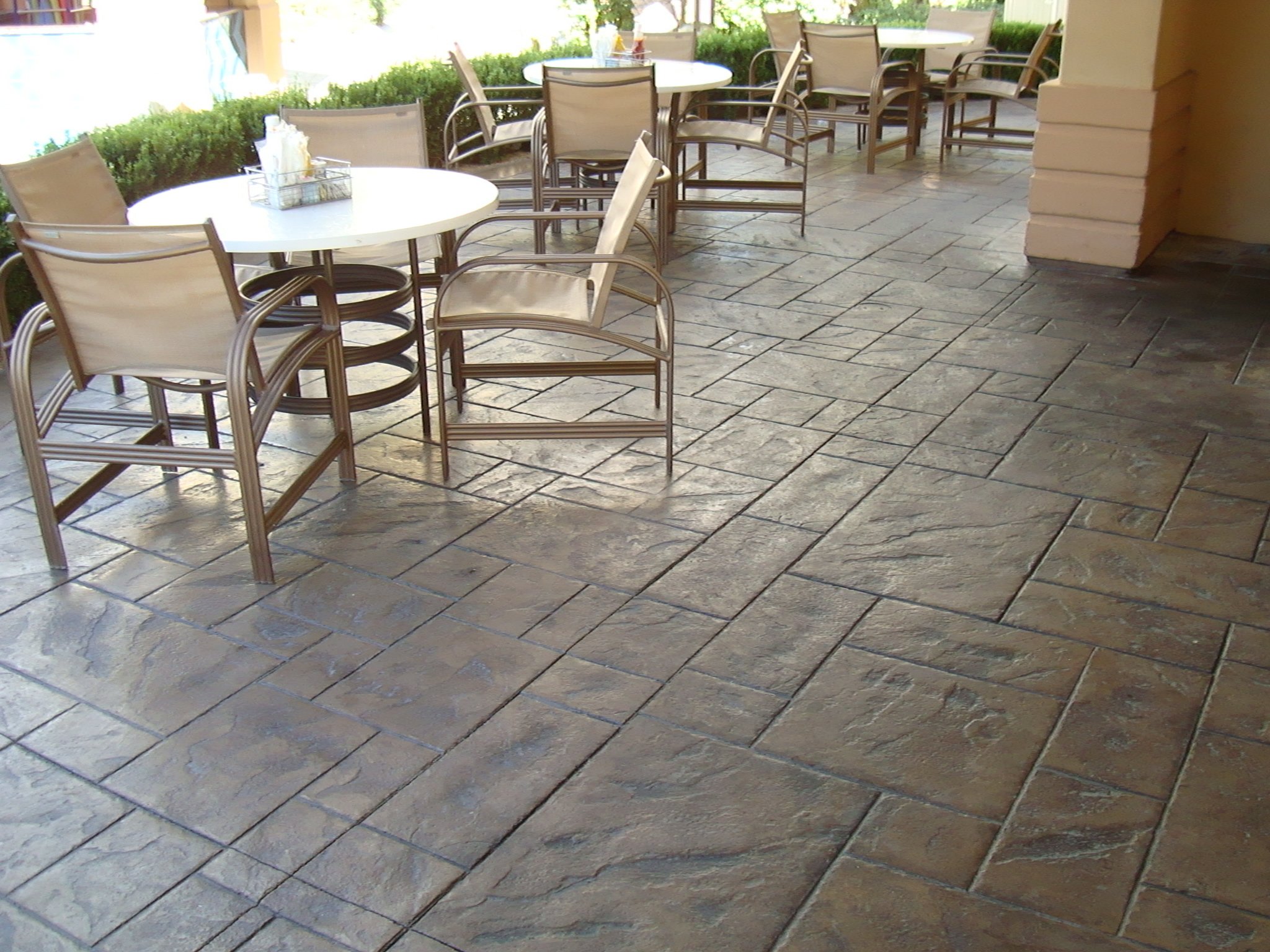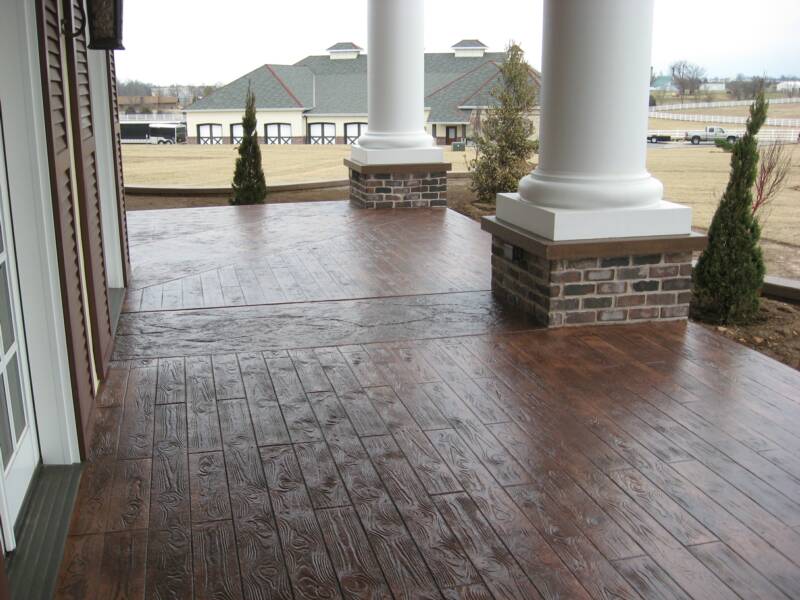
Decorative concrete toppings can be installed over any existing hard surface floor covering like ceramic tiles, slate, marble, VCT, etc., sometimes even without removing them. These concrete toppings are colored using integral iron oxide based colorants, chemical stains (acid stains) and concrete dyes. In fact, if you have a good concrete surface without any surface imperfections, beautiful colors can be applied using stains or dyes over the concrete surface.
Preparing an existing slab for a decorative concrete topping versus preparing a new slab requires different steps. For an existing slab, the installation surface should be evaluated to determine existing slab conditions and the resulting aesthetic affect that can be incurred. The surface imperfections like trench repairs, patching and existing penetrated stains will impact a decorative concrete topping application on an existing slab. The surface preparation for a new self-leveling concrete topping requires a slab be evaluated for compressive strength and moisture vapor transmission. Mechanical surface preparation, such as shot blasting and/or dustless grinding is highly recommended. The surface preparation required for concrete micro-topping can be done using a floor buffing machine or floor sander.
Once the surface is prepared, existing cracks repaired and floor patched, primers are applied over the substrate. While all efforts can be taken to minimize reflective cracking in a self-leveling decorative concrete topping, the use of epoxy primers and crack repair products cannot ensure cracking will not take place. Self-leveling decorative toppings can be saw-cut, stenciled and mottled with colorant to reduce the observance of reflective cracking. Sometimes the recommended surface preparation procedure for a pre-existing slab would be to clean and degrease the slab through use of detergents, pressure washing and solvent cleaning as necessary, followed by diamond grinding to open the slab in order to accept a product – be it a sealer, stain dye or decorative concrete topping.
The installers and contractors have several options for hiding small imperfections in the substrate. Decorative quartz, designer epoxy coatings or epoxy resin chip flooring systems are some of the options that can be used when the surface imperfections are minimal. In fact, when applying stains and dyes, the surface imperfections may enhance the looks of the floor.
The best conditions for installing decorative concrete toppings are typically between 55 to 80 degrees Fahrenheit and no higher than 75% RH. When outside of these ranges, the drying or curing of sealers and coatings can be adversely affected, causing either too slow or too fast a cure and defects in the cured film, such as blisters or a change in gloss or color.
For detailed installation instructions, please follow the link - http://www.carbolinkindia.com/
